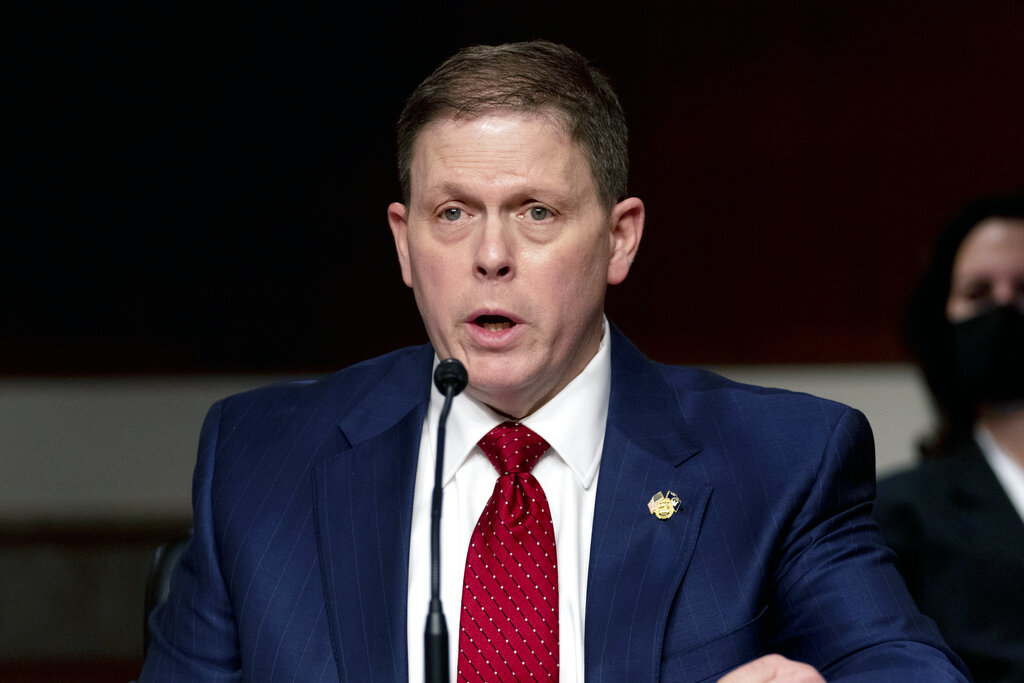Latest & Breaking News on Fox News
The 118th Congress convenes for the first time on Tuesday at noon.
“Opening day” in Congress is always full of pageantry. Lawmakers pour into the Capitol with their families from all over the country. Toddlers and kids run up and down the aisles. Freshmen bring everyone to Capitol Hill. They pack their offices with constituents, supporters and families, serving punch and local delicacies from back home.
It’s a lot like the first day of school.
And this year will likely be like any other opening day in the House of Representatives – until about 2 p.m.
That’s usually when the House votes on a speaker. The new speaker in turn swears-in the entire body, and we’re off to the races.
And for the first time in a century, things might not go down like that on Tuesday. It’s far from certain that House Minority Leader Kevin McCarthy, R-Calif., will become speaker. And, what’s even more cryptic is how long it may take the House to elect McCarthy as speaker or someone else.
This could take a few hours. Or, it may even take a week or more.
The first order of business in the House is electing a speaker. It can’t do anything – including swearing-in the new members until the House chooses a speaker.
The last time the speaker vote even went to a second ballot was 1923. It took nine ballots and three days before the House re-elected Speaker Frederick Gillett, R-Mass. The House frittered away two weeks before electing Speaker Howell Cobb, D-Ga., in 1849. But that was efficient compared to the two months the House squandered in late 1855 and early 1856 before finally electing Speaker Nathaniel Banks, D-Mass., – on the 163rd ballot.
This is what opening day will look like in the House – before things might get dicey.
Clerk of the House Cheryl Johnson will call the House to order promptly at noon on Tuesday. Johnson is the holdover from the Democratically-controlled House. She will preside from the dais – and be in charge of the House until its members select a speaker.
So, the longer it takes Republicans to figure out a speaker, the longer the House is run by an appointee of outgoing House Speaker Nancy Pelosi, D-Calif.
The first thing the House must do is take attendance. All members elected in November are asked to come to the chamber and record their presence. The House starts at 434 members: 222 Republicans to 212 Democrats. There is one vacancy: the late Rep. Donald McEachin, D-Va., died just after the election.
Then, it’s on to the selection of speaker.
REPORTER’S NOTEBOOK: SANTOS ADDS BAGGAGE TO GOP’S HOUSE MAJORITY TAKEOFF
House Republican Conference Chairwoman Elise Stefanik, R-N.Y., will nominate McCarthy. House Democratic Caucus Chairman Pete Aguilar, D-Calif., will nominate Rep. Hakeem Jeffries, D-N.Y.
If this were a typical year, that would be it. But Rep. Andy Biggs, R-Ariz., plans to challenge McCarthy for the speakership. It’s possible that someone could nominate Biggs or even another candidate. There’s no requirement that the speaker of the House be a member of the body – although that’s never happened. However, it is routine for a few members to vote for a few non-members in protest.
The vote is of the highest order at that moment in the House. The House then begins with the Reading Clerk alphabetically calling the roll of each name. Members respond verbally with their pick for speaker. The winner is the candidate who receives an outright majority of the House by those who voted for someone by name. In other words, if all 434 members vote for someone by name, the magic number is 218. But there are at least five known opponents of McCarthy. If they all vote for someone else by name, McCarthy only has a maximum of 217 votes.
However, it gets trickier yet.
There are often a few absences. So the House may not start at 434 members. Or, it’s possible members just decline to vote for speaker. Lawmakers who vote “present” don’t count against the total. The “218” threshold begins to dwindle.
The problem for McCarthy is if several members cast ballots for someone else by name. Such a scenario blocks McCarthy from obtaining an outright majority of ballots cast for someone by name. He may have the most votes. But that’s not the rule.
The successful speaker candidate doesn’t need 218. Pelosi and former House Speakers Newt Gingrich, R-Ga., and John Boehner, R-Ohio, each prevailed in at least one election with fewer than 218 votes.
But the complicating factor is that the “magic number” for speaker is unknown until the first tally is complete. We then know the total number of ballots cast for someone by name.
If there’s no winner, the House must vote again and again and again – until it selects a winner.
Things could get chaotic if McCarthy nor anyone else prevails on the first ballot. The House will find itself in a posture not seen in 100 years. There’s not a lot of precedent as to how things should unfold in the House.
This is all we know on Jan. 3: Cheryl Johnson, the Democratic Clerk of the House, remains in charge. And, there are no members of the House.
Let me say that again: there are no members of the House.
The House is not fully constituted because there is no speaker to swear them in. The members-elect only become members when they are sworn-in by the speaker.
Remember all of those family members and constituents who flew to Washington to see their cousin, friend, college buddy become a House member? Hope you don’t need to go anywhere soon. You may be cooling your heels at the Hyatt Regency bar until you see them sworn-in. And forget about staged photo-ops with the new speaker. Those are on ice, too.
Fox is told this could become a staring contest that takes days to play out. The reason is that both sides are so dug in that no one concedes right away. There will be debates. Horse trading. Raised voices. Tempers will flare.
All the while, the Republican-led House could get off to one of the most inauspicious beginnings for any Congress in history. No bills to cut IRS agents. No legislation on abortion. The House can’t even fully constitute its committees.
And, if this speaker saga drags on through Jan. 13, the lawmakers themselves and certain aides won’t get paid.
However, it’s possible the House could eventually elect a speaker without an outright majority of those casting ballots by name. In both the elections of Howell Cobb in 1849 and Nathaniel Banks in 1856, the repeated voting wore members down. For both Cobb and Banks, the House adopted a resolution that then allowed it to pick a speaker with a simple majority. In other words, the resolution said that the winner simply secured the most votes. It’s possible the House could do the same in these circumstances if it flails long enough to elect a speaker.
But we have not addressed a unique scenario which could unfold this Jan. 3: whether to seat Rep.-elect George Santos, R-N.Y.
We noted earlier that once the House concludes its initial quorum call, the next order of business is to select a speaker. Fox is told it’s possible members could try to challenge whether the House should seat Santos. Members of both parties view Santos as tainted. So why should he get to cast what could be a decisive ballot for speaker when he may be a fraud?
Late House Democratic Caucus Chairman Vic Fazio, D-Calif., attempted to sidetrack the vsote in 1997 because Newt Gingrich had faced an ethics investigation. However, it was ruled that the selection of the speaker was of the highest importance to begin the new Congress. So ethics questions must wait.
CONGRESS MISSES ITS DEADLINE TO FUND THE GOVERNMENT AGAIN
One could anticipate a similar situation – and outcome – if there’s a challenge to seat Santos before the speaker vote.
However, once the House picks a speaker – yet before the speaker swears-in the members – a lawmaker could contest whether the House should seat Santos.
Regardless of Santos’ problems, 142,673 voters in New York’s 3rd Congressional District elected him as their congressman. Article I, Section 2 of the Constitution states that “No Person shall be a Representative who shall not have attained to the Age of twenty five Years, and been Seven Years a Citizen of the United States, who shall not, when elected be an Inhabitant of that State in which he shall be chosen.”
Santos meets that bar. We think.
But Article, I, Section 5 of the Constitution also says that the House and Senate have the final say as to who is seated.
This brings us to a phenomenon in Congress known as “exclusion.”
The House has challenged the seating of dozens of members over the years. Lawmakers have raised questions about ethics, finances, bigamy, polygamy and residence. In 1985, the House refused to seat either late Rep. Frank McCloskey, D-Ind., or his GOP challenger Richard McIntyre because of a dispute over ballots. The House investigated and finally re-seated McCloskey months later. But McCloskey did not get to be a member on opening day.
In early 1967, House Speaker John McCormack, D-Mass., decided against seating Rep. Adam Clayton Powell, D-N.Y., due to a host of ethics and financial issues. Later that year, the House voted 307-116 to exclude Powell from taking his seat in the House. Powell then sued McCormack and the House and ran again for his vacant seat. Powell won, and the House seated him in January 1969. The Supreme Court ruled in Powell v. McCormack that the House overstepped its bounds by barring Powell from being seated in 1967.
The Constitution is clear about the requirements to become a member. But the House may not add requirements for people to be sworn-in. It says nothing about character.
So, any challenge regarding Santos may have to wait until after the speaker vote is complete – whenever that is.
Moreover, once the House swears-in Santos, it could move to expel him. Nothing in the Constitution says how long you get to stay. That’s why Article I, Section 5 of the Constitution also grants the House and Senate the right to kick out members. Expulsion requires a two-thirds vote. The House has only expelled five members in its history.
So, this could be a doozy of a few days on Capitol Hill. And, it may be a while until America’s bicameral legislature has two functioning bodies.













